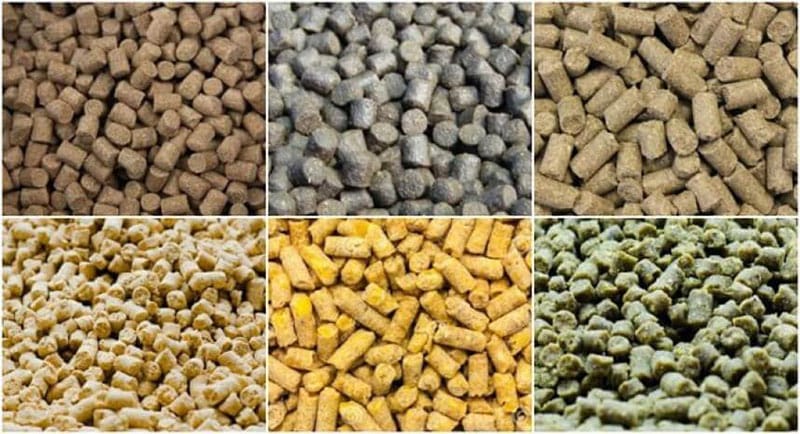Common methods of feeding green fodder to livestock

1. Feed directly
As long as the vegetables and grasses are clean and free of sediment, they can be fed to livestock. If there is a lot of mud and sand, it must be washed and crushed or beaten to feed. It is also possible to feed the long grass and whole vegetables directly, but not to feed them on the ground, so as to avoid being contaminated by feces and urine or trampled by mud hoofs and causing feed waste. Feed green fodder, it is best to feed it now, so as not to rot and cause livestock poisoning. However, raw feeding of green fodder may cause the livestock to be infected with parasitic diseases, so the livestock fed raw green fodder should be dewormed regularly. Some green fodder, such as squirrel with steel wool, has poor palatability, which will affect the feeding of livestock and poultry, so it is not suitable to be fed raw.
2. Cooked
Boiled green fodder with water is a commonly used method of feeding livestock in rural areas. The advantage is that it can kill the parasites or eggs attached to the green fodder, and it is suitable for blending with concentrated fodder. Most of the nutrients have been lost. Therefore, green fodder generally does not advocate cooked feeding. The cooked feeding method is only suitable for beans, bean curd residue, pumpkin, potatoes or green vegetables with steel wool, etc. It can destroy harmful substances such as antitrypsin in the bean feed, and can improve the palatability and undesirable substances of pumpkins and potatoes. When cooking, use high fire, stir frequently, and do not cover the pot. It is best to add some vinegar to it to promote the volatilization of harmful substances. They should be cooked and fed, and do not feed overnight, so as not to cause nitrite poisoning.
3. Fermentation
Feeding the green fodder to livestock after fermentation is an effective way to improve the palatability and nutritional value of the fodder. Generally, weeds, wild vegetables, leaves, vegetable leaves and stems, etc. are washed and chopped, put into a pool or tank, and compacted layer by layer. When it is 80% full, cover it with a straw curtain, press the stone, and wait for the green fodder to sink. Then, fill it with clean water to isolate the feed from the air, and continue to ferment for a day before it can be fished out and fed to the pigs. If it is mixed with bran and fermented, the effect is better, which can remove the peculiar smell and increase the palatability, but it cannot be stored for a long time. When the feed becomes acidic, it can be washed with water before feeding. If the feed is too acidic, it cannot be fed to pregnant animals to prevent miscarriage.
4. Soak in water
Suitable for some feeds that domestic animals don’t like to eat, such as the leaves of poplar, willow, hazel, apricot, and tussah that have a strange smell or contain many tannins. After soaking in water, the astringency and other strange smells can be removed. Domestic animals love it.
5. Silage
The grass, greens, leaves, etc. can be silaged for long-term preservation. If 0.5% to 1% of urea can be added to the silage, the protein content required by livestock can be increased. After silage, the green fodder can soften the grass quality, improve the quality of the silage, and have a sour fragrance, which can enhance the appetite of livestock and increase their feed intake, and the nutrients of the green fodder are not easily destroyed. Note that pregnant animals should not be fed more to avoid miscarriage; single-feeding is incomplete, and should be fed with other feeds to balance the nutrition; do not mix in rotten grass and rotten vegetables during silage to avoid poisoning.
6. Drying
Drying or sun-drying the grass harvested before the fruit is the best forage for livestock to eat through the winter. High-quality hay can replace concentrated feed, and the nutritional value of 2 kg of hay is equivalent to 1 kg of concentrated feed. Drying the grass is the easiest way to preserve it. The method is to spread the cut fresh grass thinly on the ground and turn it with branches 1 to 2 times a day. After 1 to 2 days, it can be dried and stacked with the sun to prevent rain and damp, so as to ensure that there is grass. Scented good hay. The dried grass can also be fed into grass powder.
[More info about livestock feed]
What equipments are needed to set up a poultry livestock chicken duck pig feed processing plant?
Annual output of 400,000 tons of livestock and poultry feed manufacturing factory project report
Turn-key customizable easy to use poultry chicken livestock cattle pig feed plant to meet your needs
Problems and countermeasures in the detection of aimal poultry livestock fish feed mixer
Analysis on the Causes of Ring Die's Failure of Poultry Livestock Animal Feed Pellet Maker
Maintenance method of livestock equipment
If you want to built one complete pellet production line in your country, pls send the inquiry to us. We will customized design according to your requirement.



